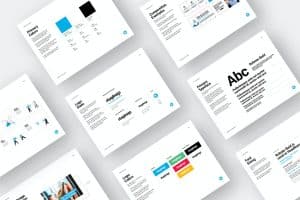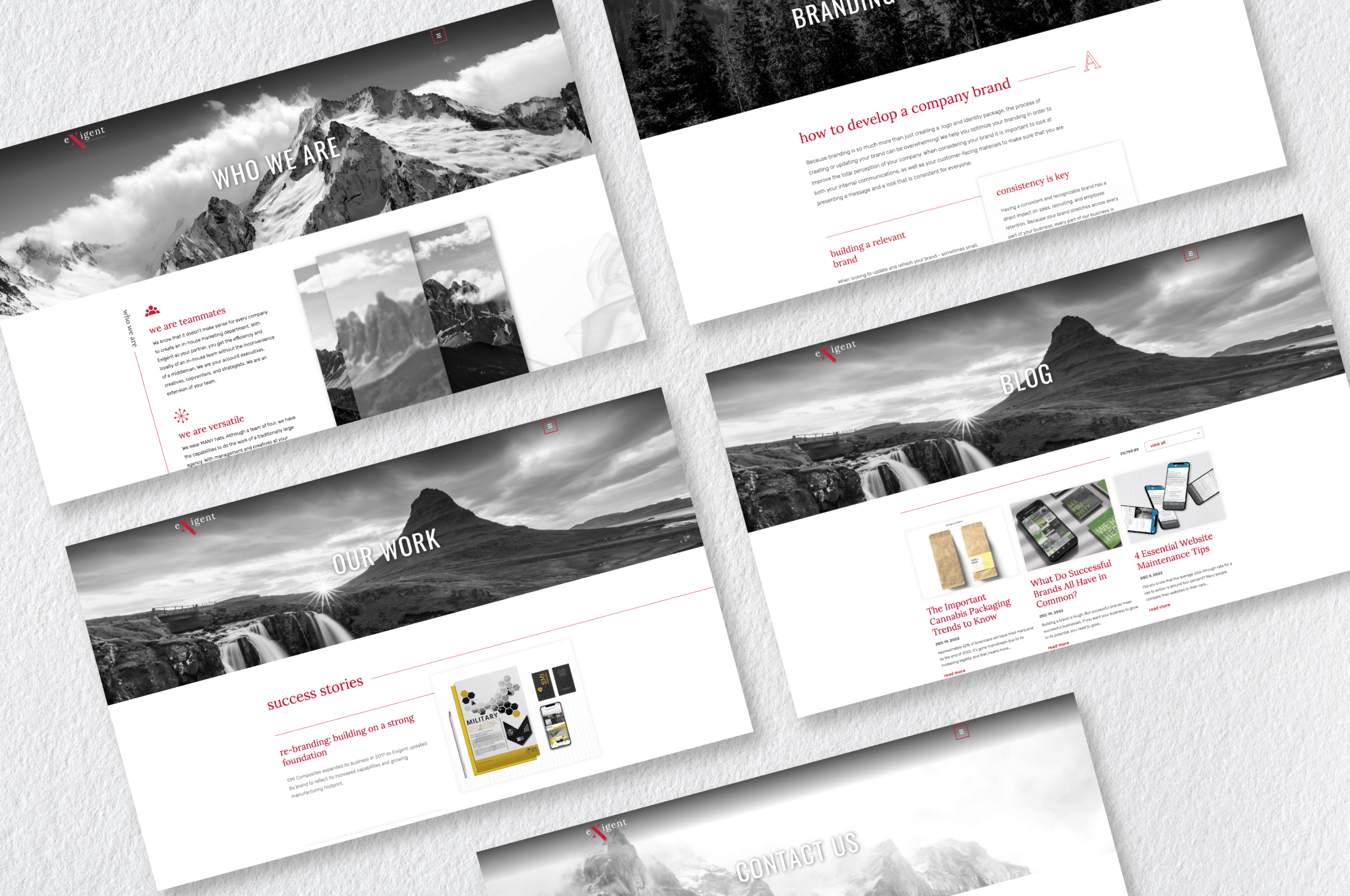Guide to Website Branding: Building a Memorable Online Identity
Building trust, encouraging client loyalty, and standing out in a competitive digital market all depend on creating a distinctive, identifiable brand on your website. Using consistent design, messaging, and values to establish a unique and distinctive identity is known as website branding. We’ll go over how to establish and preserve a powerful brand identity for your website in this article.
Understanding Website Branding
The act of strategically and aesthetically matching the components of your website to the overall brand of your business is known as website branding. This uniformity reinforces the image and values you wish to convey while assisting audiences in readily recognizing and remembering your company. For a therapy website design see here.

Why Website Branding Matters
Building trust, encouraging loyalty, and communicating your company’s distinctive qualities to your target audience are all made possible by branding. A website with a strong brand:
Boosts recognition
demonstrates professionalism
conveys values
Sets themselves out from rivals
Steps to Creating a Branded Website
Take these crucial actions to build a branded website:
Define Your Brand Identity
Understanding your brand identity clearly is the cornerstone of website branding, and it includes your:
Mission and Values: What are the core principles of your organization?
Who is your ideal client? Who is your target audience?
What distinguishes you from rivals is your unique selling proposition, or USP.
All of your website’s design and content choices are influenced by this clarity.
Choose a Cohesive Color Scheme
Colors have a big impact on how people perceive and recognize brands. Choose hues that convey the essence of your brand and arouse the appropriate feelings in your target market. For instance:
Blue: Dependability and trustworthiness
Green: expansion and sustainability
Red: vigor and enthusiasm
To achieve visual harmony throughout your website, stick to a primary color, one or two secondary colors, and a neutral background color.
Design a Memorable Logo
Being the face of your company, your logo ought to be shown prominently on your website. Create a logo that’s:
Simple: Recognizable and adaptable to various applications
Relevant: Represents your values and industry
Memorable: Makes an impression on guests that lasts
To guarantee visibility, place the logo in the header, footer, and favicon of your website.
Select Consistent Fonts and Typography
Typography should be carefully picked since it expresses personality. Choose typefaces that:
Show Off Your Brand Tone: informal, formal, sophisticated, or contemporary
Can be read: Select readable fonts for every size of device.
Remain Consistent: For headings and body text, use one or two primary fonts throughout the website.
Font consistency improves brand awareness and gives an image of professionalism.
Develop a Unique Voice and Tone
All of the material on your website should have the same voice and tone. Think about the tone that most accurately represents your brand, like:
Approachable and kind to consumer brands
Professional and educational for the finance or business-to-business industries
Innovative and audacious for lifestyle or fashion brands
This tone should be reflected in all text, from blog entries to product descriptions, in order to establish a rapport with your readers.

Visual Elements that Strengthen Branding
Use visual components to strengthen brand identification in addition to colors and typography. Find a website developer based in canberra here.
Incorporate Branded Imagery and Graphics
Custom graphics and high-quality photos let your brand stand out. Here are some pointers for branded images:
When at all possible, use original photography because it feels genuine and unique to your company.
Create unique icons and illustrations that complement the color palette and aesthetic of your company.
For a unified appearance across all images, choose consistent filters or editing styles.
Utilize a Cohesive Layout and Structure
Maintaining a consistent layout helps users navigate your website, enhances user experience, and strengthens your brand:
Header and Footer: To strengthen branding, make sure these sections are the same on every page.
Navigation: Make use of straightforward, user-friendly navigation that embodies your brand’s dedication to customer experience.
Button Styles and Interactions: For buttons, calls to action, and hover effects, use branded colors and effects.
Incorporate Brand Elements in Calls to Action (CTAs)
The tone, voice, and style of your brand should all be considered when creating calls to action. Think about:
Button Text: Make use of wording that is both actionable and consistent with the tone of your brand.
Make sure the button’s size and color complement the color scheme of your brand while yet making it stand out.
Placement: Consistently place calls to action in prominent areas to increase conversions.
Content as a Key Branding Tool
When it comes to communicating your brand’s beliefs, personality, and expertise, content is essential.
Create Valuable and Relevant Content
Post material that speaks to the needs of your audience and supports the goals of your brand:
Blog Posts: Provide your readers with useful advice, industry news, and your experience.
Testimonials or Case Studies: To establish trustworthiness, highlight client testimonials and success stories.
Product descriptions should match the language of your brand by emphasizing features, benefits, and values.
Leverage Storytelling to Connect with Your Audience
Give visitors a glimpse into the history, principles, and personalities of your brand by using storytelling. Some ideas are:
The “About Us” page: To establish a personal connection, share the history, goals, and personnel of your brand.
Customer Stories: Highlight client endorsements and achievements that highlight the value of your product.
Content from Behind the Scenes: To promote openness and trust, display content from behind the scenes.

Enhancing Branding Through User Experience (UX)
A seamless, easy-to-use interface keeps users interested and promotes your business.
Ensure Fast Loading Times
Slow load times can hurt a brand’s reputation and the user experience. Use dependable hosting, reduce code, and optimize pictures to maintain quick and consistent load speeds across all devices.
Design for Mobile Users
Your website will appear and work great on all devices thanks to responsive design. Your website must be mobile-friendly in order to preserve a favorable brand experience, as more people are visiting websites on mobile devices.
Focus on Accessibility and Inclusivity
A wider audience, including people with impairments, can access your brand thanks to an accessible website. Use best practices such as:
Alt Text for Images: Screen reader accessibility is enhanced with image descriptions.
Make sure users are able to navigate just using a keyboard.
Color Contrast: All visitors can read more easily when there is a high contrast.
Measuring and Adapting Your Branding Strategy
After putting your branding components in place, keep an eye on performance and be prepared to make adjustments in response to feedback and statistics.
Use Analytics to Track User Engagement
You may better understand user behavior and pinpoint areas for development with the use of tools like Google Analytics:
Bounce Rate: Elevated bounce rates could be a sign of problems with your UX, branding, or content.
Time on Page: Indicates how interesting and pertinent your material is.
Conversion Rate: Measures the effectiveness of your calls to action.

Collect Feedback from Your Audience
User reviews offer insightful information on how people view your brand. Utilize reviews, comments, and surveys to learn:
Brand Perception: How consumers view the character and principles of your brand.
Website Usability: Whether your website satisfies the requirements and expectations of users.
Adapt Your Branding as Needed
Don’t be scared to make changes because brands change with time. Make sure your brand’s design, content, and elements are still in line with your audience’s expectations, mission, and values by reviewing them on a regular basis.
Conclusion: Crafting a Strong, Memorable Website Brand
Creating a unified and captivating experience that embodies your brand’s values and appeals to your audience is the goal of website branding, which goes beyond colors and logos. You may create a memorable online persona that connects with users and encourages enduring devotion by emphasizing consistency, authenticity, and user experience. Your website identity can develop and adapt with constant improvement, supporting the success of your company online.




